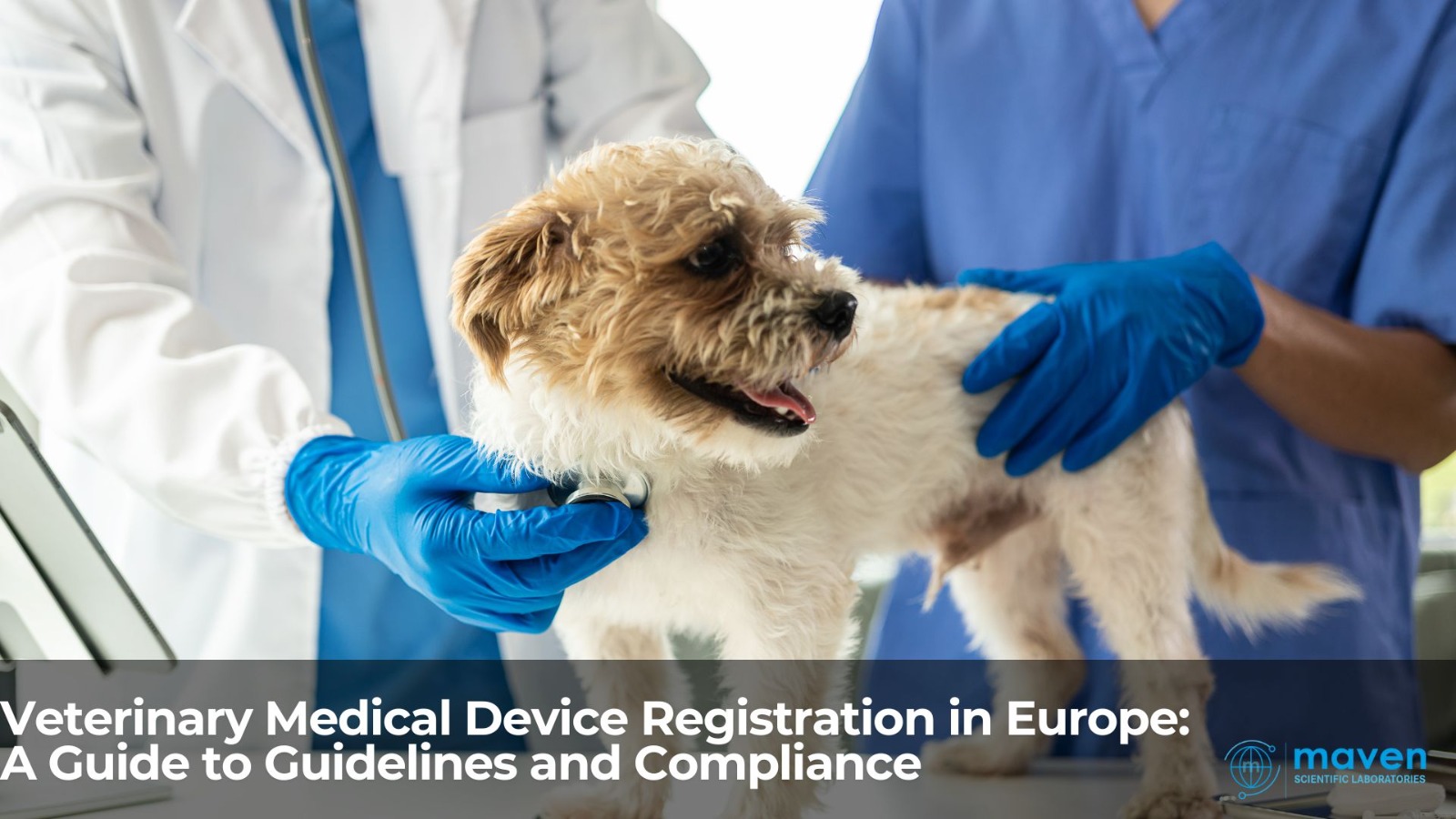
Veterinary Medical Device Registration In Europe: A Guide To Guidelines And Compliance
The regulatory landscape for veterinary medical devices in Europe differs significantly from human medical devices, reflecting the unique challenges of animal healthcare. Unlike human-targeted devices, veterinary medical devices are not governed by a unified EU-wide framework. Instead, they fall under national laws, general product safety requirements, and guidelines prioritizing animal welfare and public health.
This blog explores the current guidelines, compliance pathways, and key considerations for manufacturers and veterinarians operating in this space.
The EU Regulatory Landscape for Veterinary Medical Devices
No CE Marking Requirement
Unlike human medical devices, veterinary medical devices in the EU do not require CE marking under the Medical Device Regulation (MDR) (EU 2017/745) or In Vitro Diagnostic Regulation (IVDR) (EU 2017/746). Instead, they are governed by general product safety laws, such as the EU General Product Safety Directive (2001/95/EC), which mandates that all products placed on the market must be safe for their intended use.
Exceptions for Dual-Use Devices
If a device is CE-marked for human use but repurposed for veterinary applications (e.g., MRI machines or surgical lasers), it must still comply with human medical device regulations, including post-market surveillance for safety issues.
Key Regulatory Authorities
- European Medicines Agency (EMA): Oversees veterinary medicinal products, including drug-device combinations (e.g., drug-eluting implants).
- National Competent Authorities: Each EU member state enforces its own veterinary medical device guidelines. Examples include:
- Germany: Federal Office of Consumer Protection and Food Safety (BVL)
- Czech Republic: Institute for State Control of Veterinary Biologicals and Medicines (ISCVBM)
- Denmark: Danish Veterinary and Food Administration
Country-Specific Guidelines
Germany
- Veterinary medical devices are not classified under national law unless they contain a pharmacological component.
- Key regulations include:
- Product Safety Act (ProdSG): Ensures compliance with basic safety standards.
- Animal Welfare Act: Prohibits devices that cause unnecessary harm to animals.
Czech Republic
- Mandatory registration of veterinary medical devices with the ISCVBM.
- Devices must be listed in a national registry after submitting technical documentation, including safety and efficacy data.
Denmark
- No specific veterinary medical device regulations. However, CE-marked human devices used in animals must comply with human MDR standards.
- Adverse event reporting for dual-use devices must follow human medical device pharmacovigilance frameworks.
Steps for Compliance in the EU
1. Determine Regulatory Classification
- If the device contains medicinal properties, it may be classified as a Veterinary Medicinal Product (VMP) and subject to Regulation (EU) 2019/6 under EMA’s oversight.
- For non-medicinal devices (e.g., diagnostic tools, implants, surgical instruments), compliance with national laws and general safety standards is required.
2. Conformity Assessment
- Conduct risk assessments and safety testing to meet EU Product Safety Directive (2001/95/EC) requirements.
- In countries like the Czech Republic, submit technical documentation to regulatory agencies for registration.
3. Labelling and Documentation
- Clearly state intended use, contraindications, and safety warnings.
- Maintain records of clinical evaluations (if applicable) and implement a post-market surveillance plan.
4. Post-Market Surveillance
- Monitor adverse events and implement corrective actions, such as recalls, under national product safety laws.
Challenges in Veterinary Device Regulation
1. Regulatory Fragmentation
- Lack of harmonization across EU member states complicates market entry. For example, Germany requires no formal registration, whereas the Czech Republic mandates registration.
2. Overlap with Medicinal Product Rules
- Devices containing ancillary medicinal substances (e.g., antibiotic-coated implants) may require EMA consultation under the Centralised Procedure.
3. Limited Guidance for Innovators
- Emerging AI-driven diagnostics and novel veterinary devices lack clear regulatory pathways due to outdated national frameworks.
Key Takeaways for Manufacturers
|
Consideration |
Action Required |
|
Classification |
Confirm whether the device is a VMP or a non-medicinal product. |
|
National Requirements |
Research country-specific registration (e.g., Czech Republic) or safety laws (e.g., Germany). |
|
Post-Market Vigilance |
Implement robust surveillance systems for adverse events. |
|
Innovative Technologies |
Engage regulators early for AI-driven or dual-use devices. |
Conclusion
Europe lacks a unified regulatory framework for veterinary medical devices, requiring manufacturers to navigate a complex patchwork of national laws. Compliance with country-specific guidelines, coupled with ethical considerations for animal welfare, is essential for market access and patient safety.
As innovation in veterinary care accelerates, stakeholders are urging EU policymakers to modernize regulations—balancing technological advancement with robust oversight.







